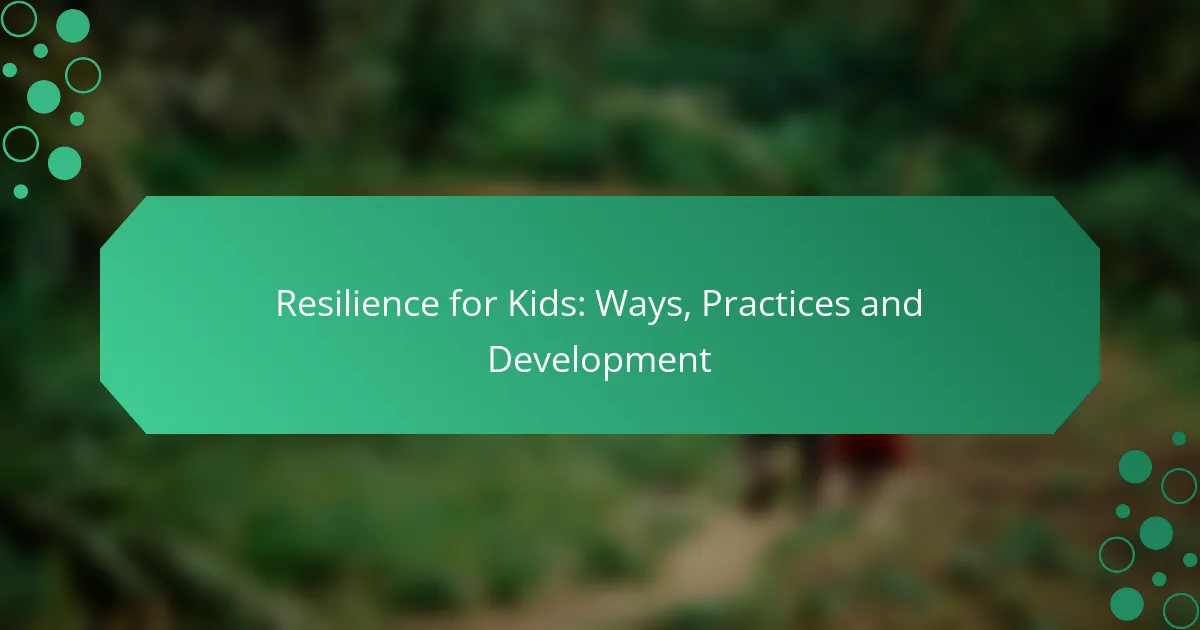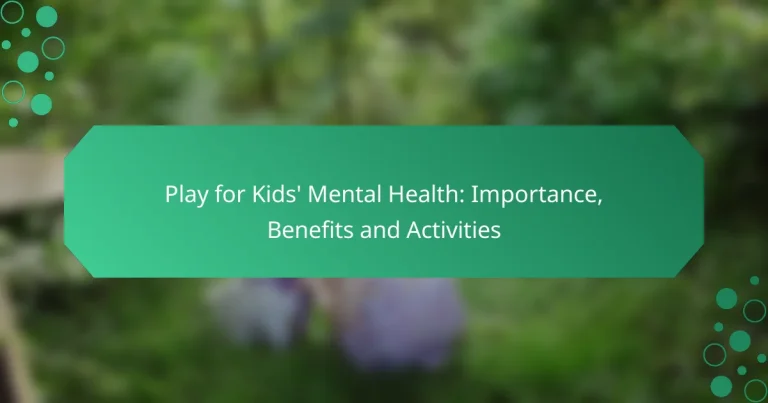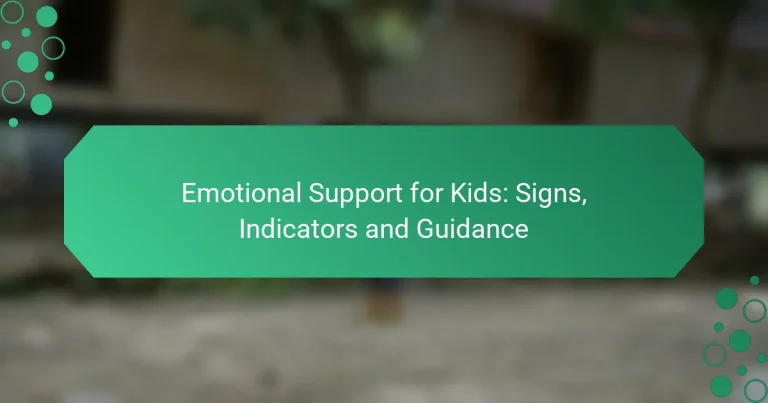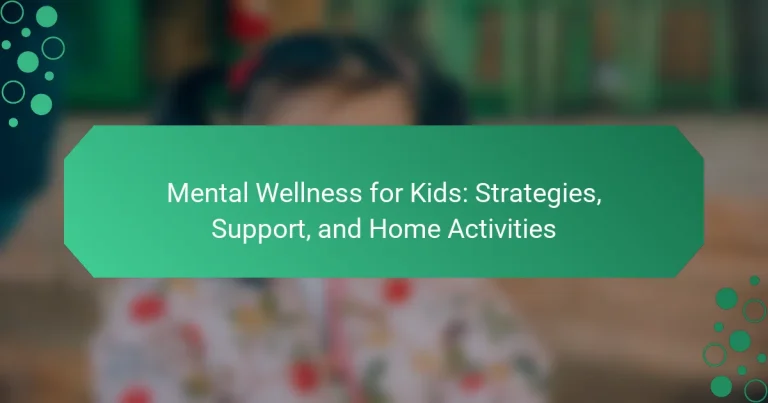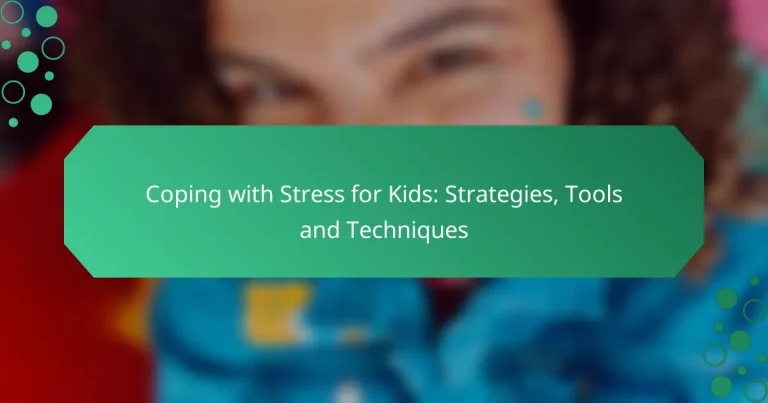Resilience for Kids: Ways, Practices and Development
Building resilience in kids is essential for helping them navigate life’s challenges with confidence and adaptability. Effective practices include fostering emotional strength, encouraging independence, and creating supportive environments at home and school. By teaching children coping skills and problem-solving abilities, we equip them to face adversity with a positive mindset.
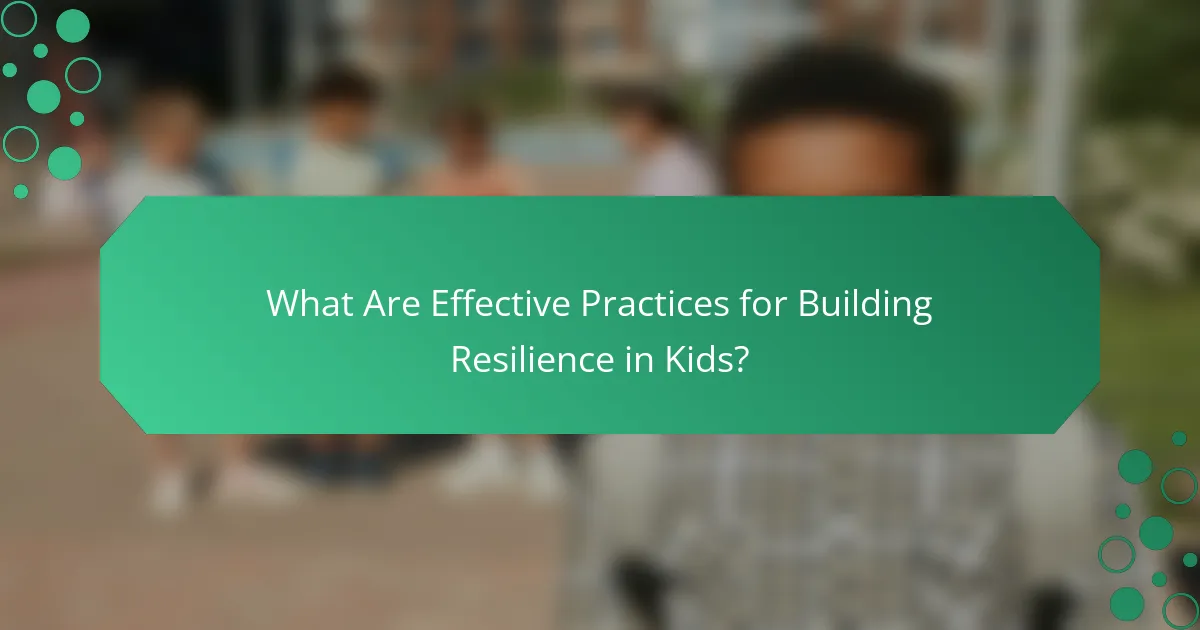
What Are Effective Practices for Building Resilience in Kids?
Effective practices for building resilience in kids include techniques that foster emotional strength, adaptability, and problem-solving abilities. These practices help children navigate challenges and develop a positive mindset towards adversity.
Mindfulness Techniques
Mindfulness techniques encourage kids to focus on the present moment, which can reduce anxiety and improve emotional regulation. Simple practices like deep breathing, body scans, or mindful walking can be integrated into daily routines.
Parents can guide children through mindfulness exercises by setting aside a few minutes each day for quiet reflection or meditation. This can be done at home or in nature, helping kids connect with their surroundings.
Positive Affirmations
Positive affirmations involve encouraging kids to repeat uplifting statements about themselves, which can boost their self-esteem and resilience. Phrases like “I am capable” or “I can handle challenges” can be effective when practiced regularly.
To make affirmations more impactful, parents can help children create a list of personalized statements and encourage them to recite these affirmations each morning. This practice can instill a sense of confidence and optimism.
Problem-Solving Skills
Teaching problem-solving skills equips children with the ability to tackle challenges effectively. This involves breaking down problems into manageable parts and brainstorming potential solutions.
Parents can facilitate this by presenting hypothetical scenarios and guiding children through the steps of identifying the problem, considering options, and evaluating outcomes. Role-playing can also be a fun way to practice these skills.
Emotional Regulation Strategies
Emotional regulation strategies help kids manage their feelings in a healthy way. Techniques such as identifying emotions, using coping strategies like counting to ten, or expressing feelings through art can be beneficial.
Encouraging children to talk about their emotions and providing them with tools to express themselves can foster resilience. Parents should model emotional regulation themselves to reinforce these practices.
Social Support Systems
Social support systems are crucial for building resilience in kids. Strong relationships with family, friends, and mentors provide emotional backing and guidance during tough times.
Parents can help children cultivate these connections by encouraging participation in group activities, sports, or clubs. Regular family meetings can also strengthen communication and support within the family unit.
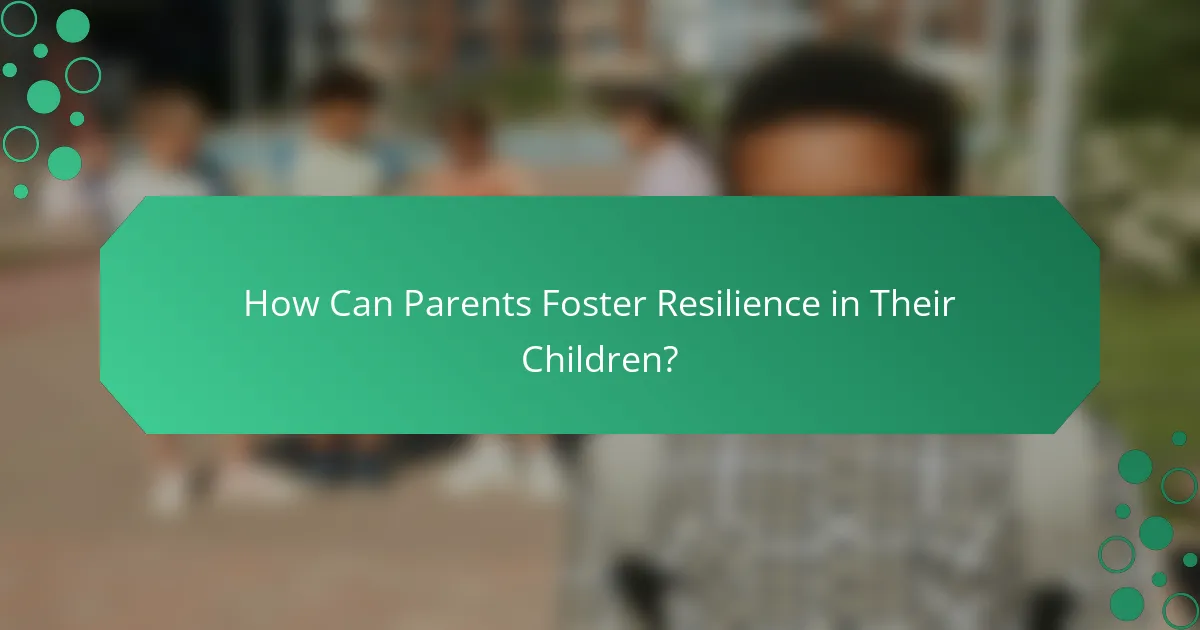
How Can Parents Foster Resilience in Their Children?
Parents can foster resilience in their children by encouraging independence, modeling resilient behavior, and creating a safe environment. These practices help children develop coping skills and the ability to navigate challenges effectively.
Encouraging Independence
Encouraging independence allows children to make their own choices and learn from their experiences. Start with small tasks, such as choosing their clothes or deciding on snacks, and gradually increase responsibilities as they grow.
Provide opportunities for problem-solving, like letting them figure out how to resolve a conflict with a friend. This helps build confidence and decision-making skills, essential components of resilience.
Modeling Resilient Behavior
Children learn by observing their parents, so modeling resilient behavior is crucial. Share your own challenges and how you cope with them, demonstrating a positive attitude and persistence in the face of difficulties.
Use everyday situations to show how to handle setbacks, such as discussing a work-related issue and how you plan to overcome it. This teaches children that resilience is a valuable skill that can be developed.
Creating a Safe Environment
A safe environment is fundamental for fostering resilience. Ensure that your home is a place where children feel secure and supported, both emotionally and physically. This includes establishing routines and clear expectations.
Encourage open communication, allowing children to express their feelings without fear of judgment. This helps them understand their emotions and develop coping strategies, reinforcing their ability to bounce back from adversity.
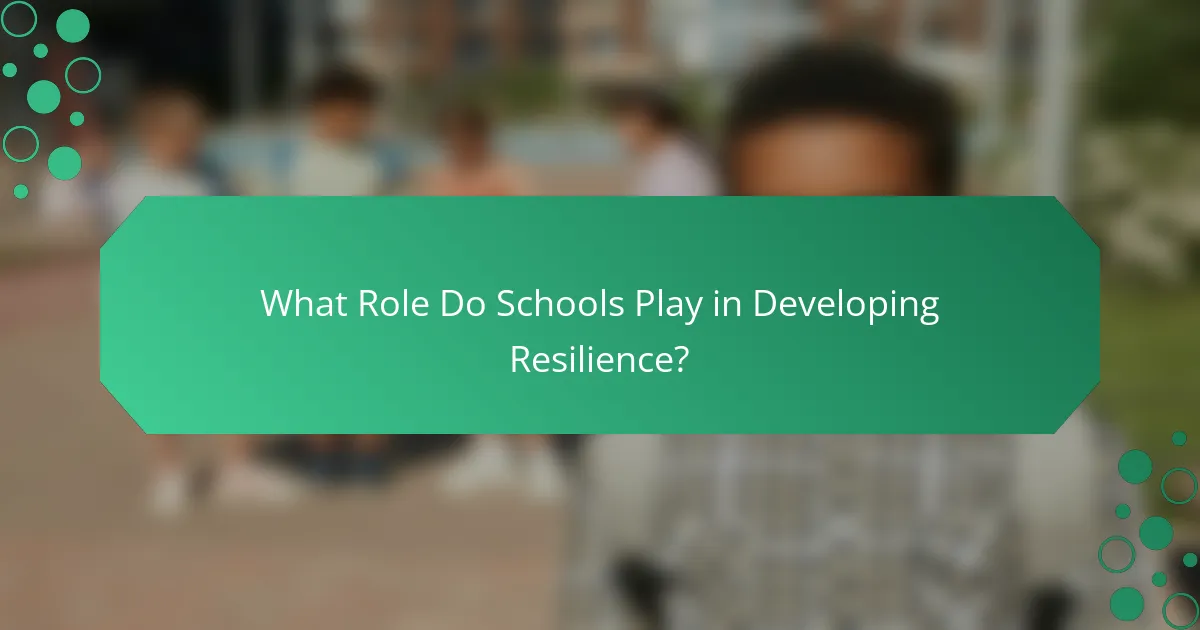
What Role Do Schools Play in Developing Resilience?
Schools play a crucial role in developing resilience by providing structured environments where children can learn coping strategies and emotional regulation. Through various programs and supportive relationships, schools help students build the skills necessary to face challenges and bounce back from setbacks.
Resilience Training Programs
Resilience training programs in schools focus on teaching students practical skills to manage stress and adversity. These programs often include activities that promote emotional awareness, problem-solving, and goal-setting. For example, workshops may involve role-playing scenarios where students practice responding to difficult situations.
Many schools implement evidence-based curricula that are designed to enhance resilience, such as the Positive Psychology framework. These programs can vary in duration, typically lasting from a few weeks to an entire school year, depending on the depth of the curriculum.
Supportive Teacher Relationships
Supportive relationships with teachers are vital for fostering resilience in students. When teachers provide encouragement and understanding, students are more likely to feel safe and supported, which enhances their ability to cope with challenges. Regular check-ins and open communication can help build trust between students and educators.
Teachers can also model resilience by sharing their own experiences with overcoming obstacles. This not only humanizes them but also demonstrates practical coping strategies that students can adopt in their own lives.
Peer Collaboration Activities
Peer collaboration activities encourage students to work together, fostering a sense of community and shared responsibility. Group projects, team sports, and cooperative learning exercises allow students to practice communication and teamwork, essential components of resilience. These activities can also help students develop empathy and support networks among their peers.
Schools can enhance these experiences by creating diverse groups that mix students from different backgrounds, promoting inclusivity and broadening perspectives. Engaging in peer-led discussions or mentorship programs can further strengthen these collaborative efforts, providing students with additional support systems.
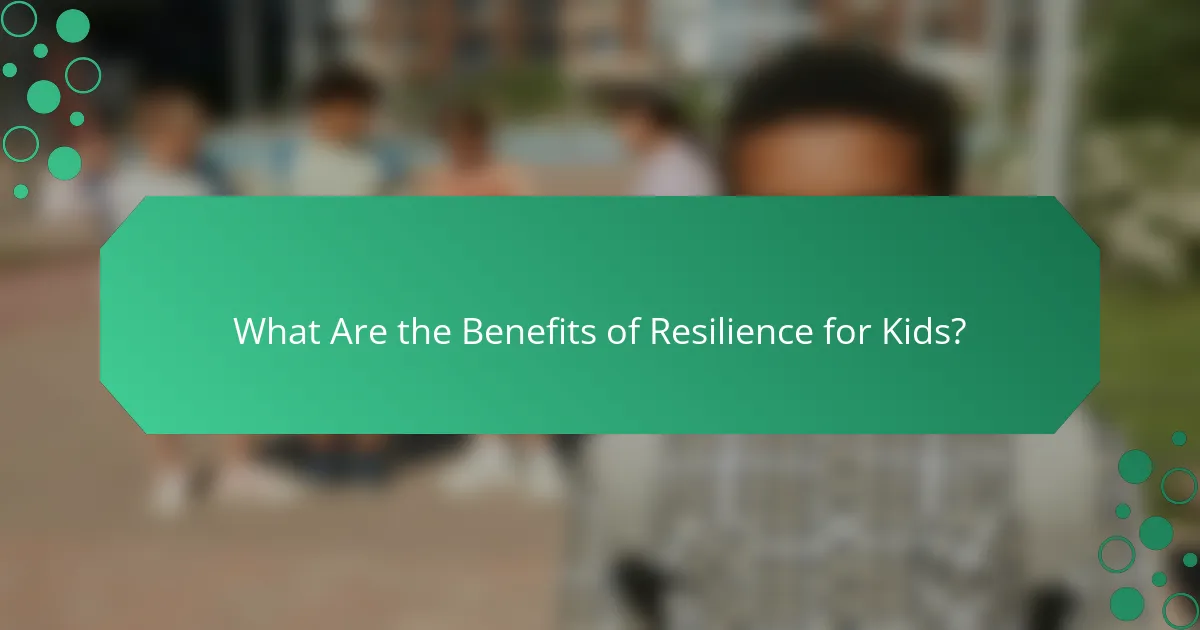
What Are the Benefits of Resilience for Kids?
Resilience in children enhances their ability to cope with challenges, leading to significant benefits in various aspects of their lives. By developing resilience, kids can improve their academic performance, emotional health, and social skills, which are essential for their overall growth.
Improved Academic Performance
Resilient children tend to perform better academically as they are more equipped to handle setbacks and challenges in their studies. They are likely to develop effective problem-solving skills and maintain a positive attitude towards learning, which can lead to higher grades and a deeper understanding of subjects.
Encouraging resilience can involve setting realistic goals and celebrating small achievements. For example, a child who struggles with math can benefit from breaking down complex problems into manageable steps, allowing them to build confidence and competence over time.
Better Emotional Health
Resilience significantly contributes to better emotional health in children by helping them manage stress and anxiety. Kids who can bounce back from disappointments are less likely to experience prolonged feelings of sadness or frustration.
Practices such as mindfulness, journaling, or engaging in physical activities can enhance emotional resilience. Parents can support their children by encouraging open discussions about feelings and modeling healthy coping strategies.
Stronger Social Skills
Children with resilience often exhibit stronger social skills, as they are better at navigating interpersonal relationships and conflicts. They tend to communicate effectively and show empathy towards others, which fosters positive interactions and friendships.
To promote social resilience, encourage children to participate in group activities or team sports. These environments provide opportunities to practice cooperation, negotiation, and conflict resolution, essential skills for building lasting relationships.
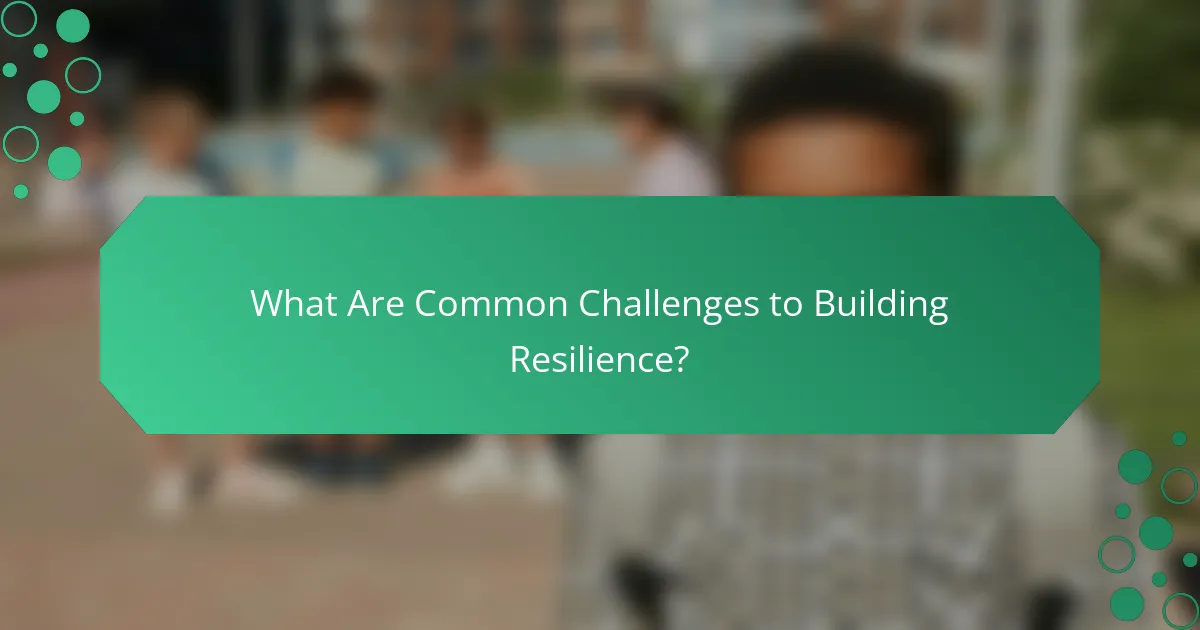
What Are Common Challenges to Building Resilience?
Building resilience in kids can be hindered by various challenges, including emotional struggles, lack of support, and exposure to stressors. These obstacles can prevent children from developing the coping skills necessary to navigate life’s difficulties effectively.
Emotional Regulation
Emotional regulation is a significant challenge for many children. They may struggle to identify and manage their feelings, leading to outbursts or withdrawal. Teaching kids to recognize their emotions and express them appropriately is crucial for building resilience.
One effective method is to encourage children to use “feeling words” to describe their emotions. This practice can help them articulate their feelings and reduce frustration. Additionally, mindfulness techniques, such as deep breathing or visualization, can assist in managing overwhelming emotions.
Social Support
A lack of social support can impede a child’s ability to build resilience. Children who feel isolated or unsupported may struggle to cope with challenges. It’s essential for parents and caregivers to foster strong relationships and encourage friendships.
Creating opportunities for social interaction, such as team sports or group activities, can help children develop a support network. Parents should also model healthy relationships and communication, teaching kids the importance of seeking help when needed.
Exposure to Stressors
Children exposed to chronic stressors, such as family conflict or financial instability, may find it difficult to develop resilience. These stressors can create a sense of helplessness and anxiety. Addressing these issues is vital for fostering a resilient mindset.
Parents can help by providing a stable and nurturing environment. Open discussions about stressors can empower children to express their concerns and feel supported. Additionally, teaching problem-solving skills can help children navigate challenges more effectively.
